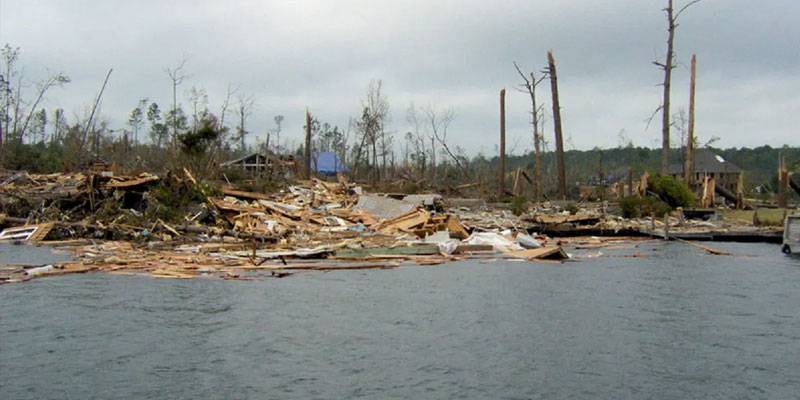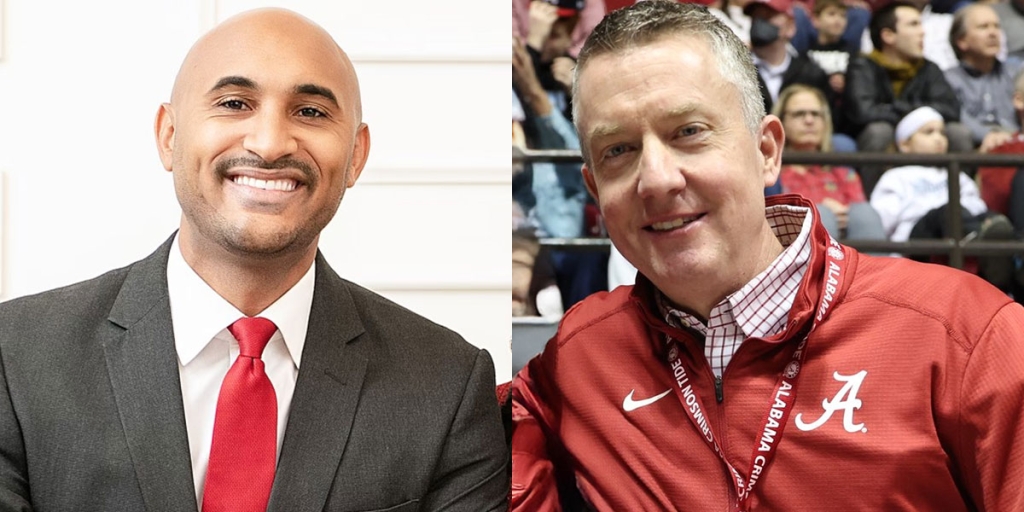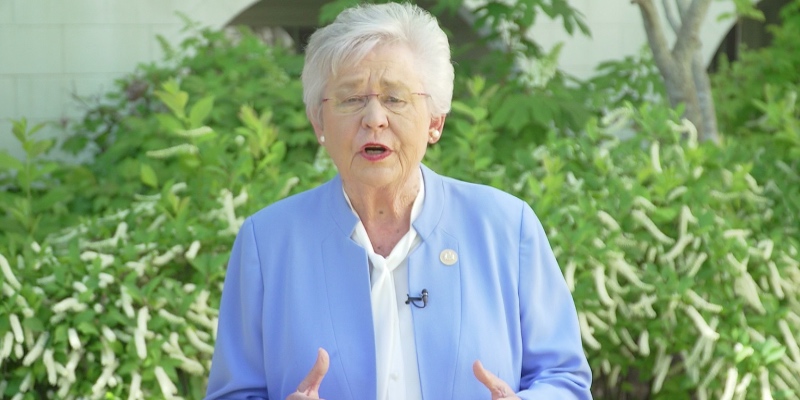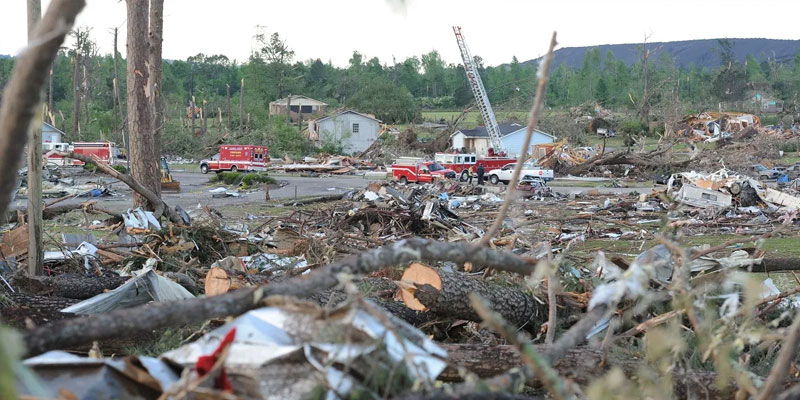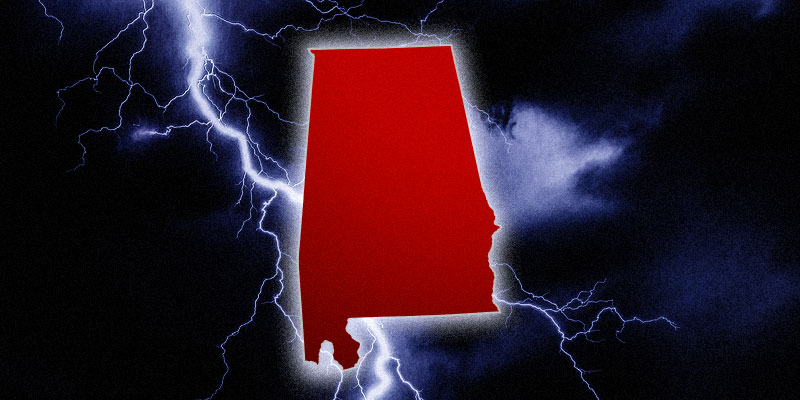The stunned and mournful gaze of most of Alabama, and indeed much of the nation, was fixed on Tuscaloosa in the aftermath of the April 27, 2011, tornadoes. But the eastern part of the state was reeling from its own encounter with the deadly twisters that clawed landscape and claimed lives that dreadful day.
A historic superstorm unleashed 62 tornadoes across Alabama over 14 hours, killing as many as 252 people and injuring up to 2,200, according to official sources.
Elmore, St. Clair and Calhoun Counties were among the east Alabama areas hardest hit by the tornadoes that have since been categorized as EF4 and EF5 in strength.
Ten years later, the physical evidence of downed power lines and destroyed homes is mostly gone, but for those who endured those nightmarish moments, the emotional scars remain.
Elmore County: ‘Complete devastation and a night I’ll never get over’
Throughout the day on April 27, tornadoes created havoc across the state. At 8:12 p.m., as the storm system moved east, the tornado nightmare was just beginning for residents in Elmore County.
The tornado, which began as an EF2, widened and strengthened, ultimately becoming an EF4. The monster storm was on the ground for just over 44 miles and consumed a path almost a half-mile wide.
The devastating superstorm took seven lives, injured more than 30, destroyed property and forever changed communities – physically and emotionally.
After the storms, stories emerged of catastrophic damage and heartbreaking loss of life, but also of neighbors helping neighbors, strangers becoming friends and communities rebounding.
Nancy Myers, owner of Myers Country Acres, a mobile home community near Eclectic, remembers devastation after the park absorbed a direct hit from the tornado.
“I remember the darkness,” she said. “It was so dark after the tornado struck. There were no lights, no stars. It was total darkness.
“My husband and I had watched the weather and knew a storm was coming. We went into the closet and it was all over so fast. As soon as it passed, we went outside to check on everyone and could see nothing … only heard people screaming for help.”
Her husband immediately began checking on neighbors.
“‘Everything is gone,’” Myers remembered her husband saying when he returned. “At first, I thought it was an overreaction, but it wasn’t. Everything was gone; the tornado had even pulled the grass out of the yards.”
Four people were killed – including members of the Myers family – at the mobile home community. Many others were injured. Twelve mobile homes were destroyed.
“In those first few minutes, we couldn’t see anything, but could hear,” she said. “We followed the voices of people calling for help to find people. It was pure devastation. It didn’t take very long for first responders to arrive and begin searching as well.”
Myers remembers the horrific sight at first light the next morning. People had lost everything. Everyone was just beginning to grasp the loss of what was most valuable, and irreplaceable: their family and friends.
“My husband had to identify his sister and niece,” Myers said. “Something he just never got over.”
Neighbors united over and through their pain.
“From the time the tornado passed, everybody in the park pulled together,” she said. “Everyone was looking for each other’s stuff. Everyone was supporting and comforting. Terrible night, but it brought everyone very close together.”
Help began to pour into her community. Myers remembers a resident standing next to her a couple of days after the tornado. He pointed to the park and moved his finger in a circular motion. “Look out there,” he said. “There’s probably 1,000 people helping and all of those people are doing good.”
The Alabama National Guard, churches, schools, area residents and complete strangers all came to help.
Following the April 27 tornado, the Myers couple began work to help protect residents of their mobile home community from the next storm.
“My husband buried a big, heavy cargo shipping container in an embankment in the park,” Myers said. “It is completely underground with only the door exposed. It is a safe place and open for everyone in our community.”
She said that night changed her.
“I try to handle weather calmly, but when I know there’s bad weather coming, I try to call everyone in the park to make them aware and to encourage them to go to the shelter,” she said. “I know that shelter will save lives.”
She said her memory of that night 10 years ago is as stark as if it happened yesterday.
“Just a devastating night,” she said. “There’s been lots of heartache and hurt that none of us will ever get over.”
St. Clair County: ‘I see a cross’ – Surviving the tornado brings couple closer to God
Don Sanders and his wife, Sis, usually don’t fret too much over tornado warnings and watches. But, thankfully, April 27, 2011, was different.
“Normally, we’d go to bed or watch TV, but we wouldn’t take any precautions,” said Don Sanders, who works at Metro Bank in Pell City and Ashville. “But this particular time, we’d seen how bad the tornadoes were when they came through Tuscaloosa, and there had been some earlier in the day in St. Clair County.”
The last thing the couple heard on TV was meteorologist James Spann saying that a tornado was on the ground along the road where they lived in Shoal Creek Valley. Then the power went out.
“We immediately went to the hallway and took the pictures down off the hallway wall,” he said. “When it hit, it hit hard and destroyed our house.”
The EF4 tornado that made its way across Shoal Creek Road and between the two mountains wreaked havoc on Shoal Creek Valley that day.
The powerful winds physically pushed and pulled Don and Sis Sanders, dragging them down the hallway floor of the home where they’d lived for 27 years.
“Our knees were skinned and burned, just like you’d been on the high school gym floor,” Don Sanders said. “We hit one wall and then the other wall, back and forth, coming down the hall.”
They held on to each other through the ordeal. Sanders had bruises on his back from where his wife had dug in. They ended up in the bathroom.
“The first thing she said was, ‘I see a cross.’ When she said, ‘I see a cross,’ I’m thinking: I don’t know if we’re on our way to heaven or if we’re still here.”
The two walls of the hallway were gone and the ductwork pulled out. Sis Sanders was looking underneath the house. What she saw was two pieces of wood in the shape of a cross.
“That’s where I think He was reminding us that he had his hand over us,” Don Sanders said. “It was reassuring, but we didn’t have any idea of the scope of everything that was happening, how big it was.”
Half the house had been swept clean by the powerful gusts; the other half was rubble. The couple stood taller than anything that was left, Sanders said.
“A lot of people said something to us about losing our stuff. My wife liked antiques and dishes and different things,” he said. “But when we got up, we realized: that was just stuff, and we’re just proud to be here.”
They never found even 10 square feet of the roofing that had been on the house. They never found their clothes dryer. Or their freezer. A 38-foot-tall tree in the backyard was plucked up and deposited more than 50 feet away.
“I was about 75 feet from that, and God chose to leave me here,” he said. “It’s just amazing that we’re here.”
One thing found was a high school sweater from when Don Sanders attended Ashville High School. It was discovered more than 30 miles away in Hokes Bluff, three years after the tornado.
“It just has one arm now, but I was very happy to get that back. Very happy I wasn’t in it,” he said. “It was just so powerful that day. It was a terrible day all over the state of Alabama. It wasn’t just us.”
He acknowledged the emotional toll of surviving the tornado, when others, literally on the same street, didn’t. Two people died in a house just up from the Sanders’ home. Two more died in a house just up from that neighbor.
“In the valley where we live, there could easily have been 30, 40 people killed,” he said.
In all, the storm claimed 12 lives in Shoal Creek Valley, including Sanders’ cousins, Albert and Angie Sanders. Two others – one in Moody and one in Pell City – brought the death toll to 14 in St. Clair County.
“We felt guilty because we survived,” Sanders said. “But there’s a reason: God has something else for us to do. Emotionally, we do fine. But it doesn’t take much to get us. … It’s still a tender place in our hearts. And, yes, we’re closer to God than we were.”
The couple, who’ve been married 43 years, was so affected by the emotional pressure and shock of the ordeal that, for a long time, they had trouble processing their thoughts or completing their sentences. It took a while for them to decide whether to rebuild at the same location.
“We had insurance, we could build back, but all of the land was just totally destroyed there,” he said. “We knew if we built a house back there, we’d always look out and see devastation, and we just did not want to do that.”
The landscape was so desecrated that one of the Sanders’ sons, who came to help begin cleanup the next day, drove past their house because he didn’t recognize the area. The couple’s other son was sitting in traffic in the neighborhood and didn’t know where he was.
In the end, they decided not to leave Shoal Creek Valley. Instead, they built deeper into the Valley near the lake, not too far from their old home.
The storm gave the couple a greater appreciation for their neighbors and for humanity.
Don Sanders commended the St. Clair Sheriff’s Office for doing an amazing job of keeping control and getting volunteers in and out of the area. “And all the people who came and helped and helped and helped. People were sacrificing to help.”
Surviving the April 27, 2011, tornadoes gave the couple a renewed sense of purpose. They attend church more and are a lot more attentive to the needs of other people. And they plan to do more for others when they retire.
“God wanted us to do something else, I don’t know what, but we are closer (to God). We appreciate things more. We don’t sweat the little things anymore. It was traumatic, but he brought us through it, and he’s been with us every step of the way,” Sanders said.
Asked what Sanders would tell others who, even 10 years later, might still be struggling to recover emotionally, he gave a word of encouragement.
“We’re all here one day at a time, and we just got to do the best we can with that one day we have,” he said. “Some of us know, with different health issues, that we have a short time left, but none of us, none of us is promised tomorrow. Just try to live today and know that God’s in control.”
Calhoun County: Don and Sheila Crider – Everyone needs a storm shelter
A decade after the horrifying EF5 tornado ripped through Ohatchee – on its way to the Wellington community before eventually crossing the state line into Georgia – Don Crider’s voice still quivers with emotion. On April 27, 2011, the home that he and wife, Sheila, shared was blown off the concrete slab where it sat since 1988.
The Criders had started the day in Birmingham, where Don underwent knee surgery. They knew severe weather was expected. In fact, the surgeon who performed the surgery had damage to his Birmingham home that morning from an earlier storm.
But this was a time before businesses closed early and children stayed home from school to avoid potentially dangerous storms. So, the Criders went about their business and arrived back home along the shoreline of Neely Henry Lake before the storms trekked into east Alabama.
The powerful tornado that forever changed the Criders’ lives was part of a long-track superstorm that pounded Tuscaloosa and spawned multiple twisters that rampaged their way eastward across the state. The couple had advance warning that the storm was heading through the Shoal Creek Valley area in St. Clair County and would take a direct path toward their home in Ohatchee.
“We got into a closet, which was not our typical saferoom,” Sheila Crider said. “But Don was on crutches, so we huddled together in the closet and held hands – for at least part of the time.”
The storm destroyed everything the couple had. Crider, a general contractor, worked with his son for nearly 10 months to rebuild the home.
At the top of the priority list was constructing a storm shelter, which doubles as Don’s closet. The 10-by-12-foot enclosure features 8-inch-thick concrete walls with double rebar enforcement, a steel door cast in concrete and double deadbolts.
“Everyone needs to consider building a storm shelter in their home,” he said. “A storm of this magnitude literally pulls wood from screws in the foundation.”
The Criders enjoy peace of mind in their new, storm-safe home. Even so, they can’t help but be reminded of that dreadful day each time a new storm tracks its way into the Ohatchee area, which happens more frequently than they’d like.
Indeed, the small northern Calhoun County town was hit last month by a significant tornado, on March 25, when an EF3 took the lives of four people in the community.
Sheila Crider said the support, both after the recent storm and the one in 2011, was amazing. “It’s truly remarkable to see people you don’t even know show up to give help,” she said.
Both of the Criders were injured in the 2011 storm. Don, who was wearing a knee brace following that day’s surgery, received a severe back injury from a falling rock wall. Sheila suffered bumps and cuts from debris.
The more lasting wounds, however, are emotional.
“It was unbelievable,” she said. “Everything around us was just gone.”
Anthony Cook, Mike Jordan and Jacki Lowry contributed to this report.
(Courtesy of Alabama NewsCenter)




